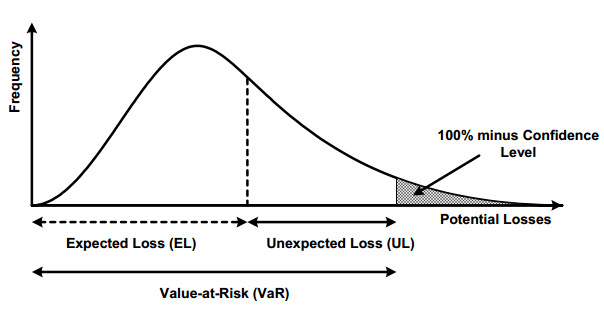hellohi
Active Member
dear @David Harper CFA FRM
just want to ask if VAR includes expected loss? in the following chart, it seems that the VAR = EL + UL, not just unexpected loos....so this made me confused because as I knew that the expected loss is not risk, so how it be part of VAR?

best regards
Nabil
just want to ask if VAR includes expected loss? in the following chart, it seems that the VAR = EL + UL, not just unexpected loos....so this made me confused because as I knew that the expected loss is not risk, so how it be part of VAR?

best regards
Nabil
Last edited:
